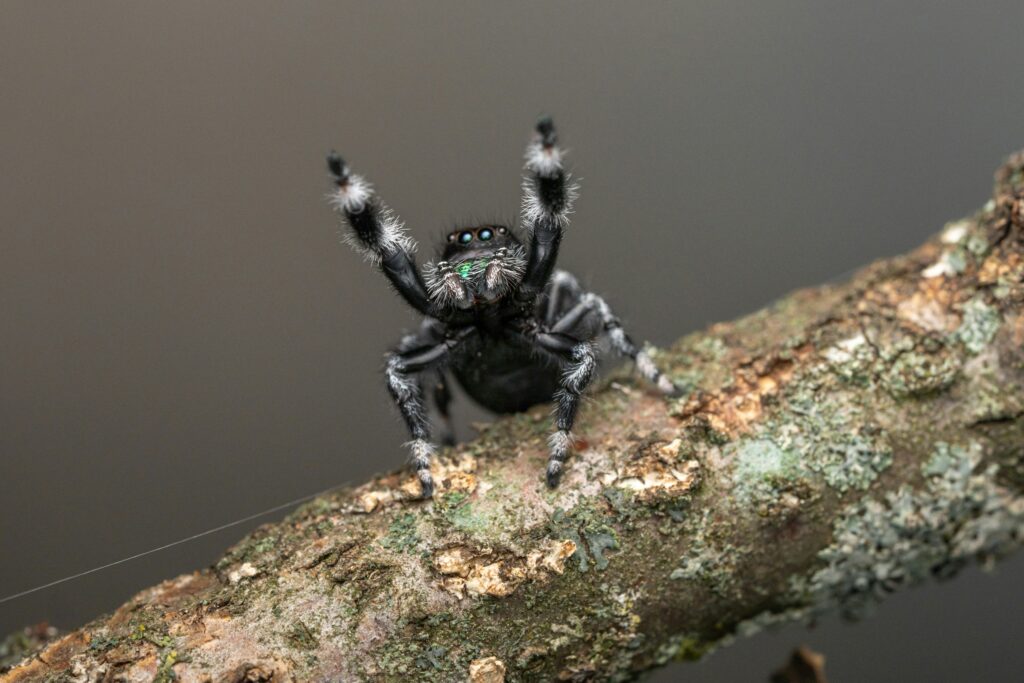When we think of spiders, we often picture them spinning intricate webs or crawling silently across walls. Yet within the diverse world of arachnids exists an extraordinary group of spiders with remarkable athletic abilities. Jumping spiders (family Salticidae) can leap distances many times their body length, with some species achieving truly impressive heights. Among these aerial acrobats, one non-venomous champion stands out for its exceptional jumping prowess. This article explores the remarkable Phidippus regius, commonly known as the Regal jumping spider, which holds the record for the highest jump among non-venomous spiders, and examines the fascinating biology and behaviors that make these jumpers so special.
Meet the Champion: Phidippus Regius

The Regal jumping spider (Phidippus regius) is a relatively large jumping spider native to the southeastern United States, particularly Florida, and parts of the Caribbean. With females reaching up to 15-22mm and males slightly smaller at 12-18mm, they are among the largest jumping spiders in North America. Their bodies feature distinctive markings, with males typically displaying brilliant iridescent chelicerae (jaws) in metallic blue-green and females showing more subtle coloration. While all jumping spiders have impressive leaping abilities, the Regal jumping spider stands out for its exceptional vertical and horizontal jumps, capable of clearing distances up to 50 times its body length when necessary—making it the highest-jumping non-venomous spider currently documented.
The Science Behind the Super Jump
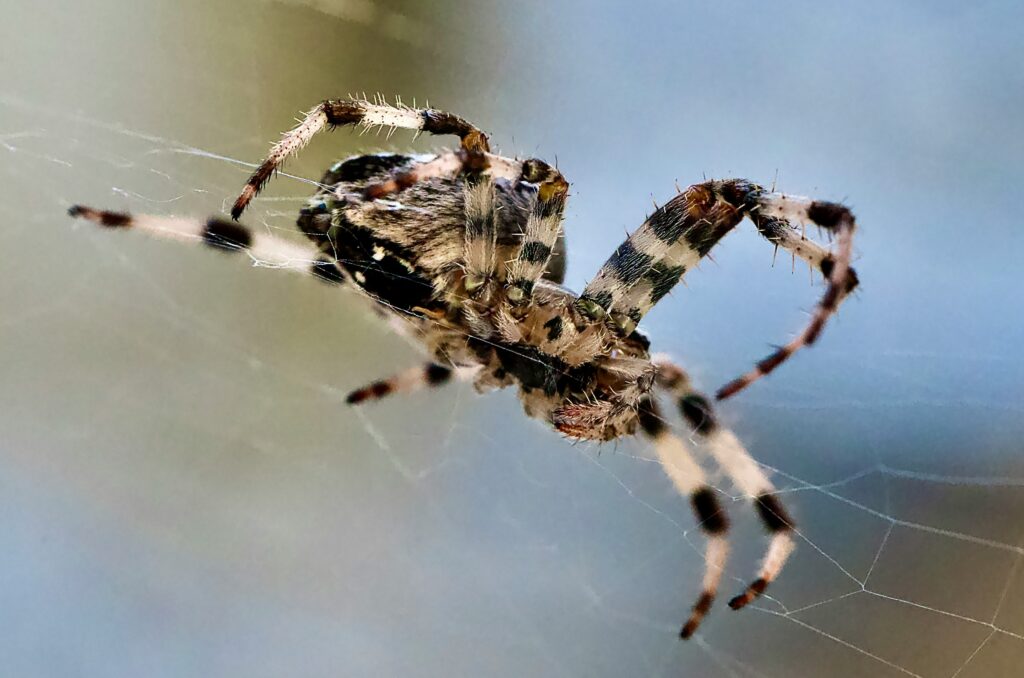
The extraordinary jumping ability of the Regal jumping spider isn’t just about muscle power—it’s a sophisticated hydraulic system at work. Unlike humans who rely primarily on muscles for jumping, these spiders use a combination of muscle contractions and rapid changes in hemolymph (spider blood) pressure. When preparing to jump, the spider increases blood pressure in its legs by contracting muscles in its cephalothorax, essentially creating a hydraulic pump system. Research has shown that this mechanism allows them to generate forces exceeding 80 times their body weight in milliseconds. This hydraulic launching system enables them to achieve takeoff velocities of up to 70 centimeters per second, propelling them to heights that would be equivalent to a human jumping over a 30-story building.
Jumping with Precision and Purpose
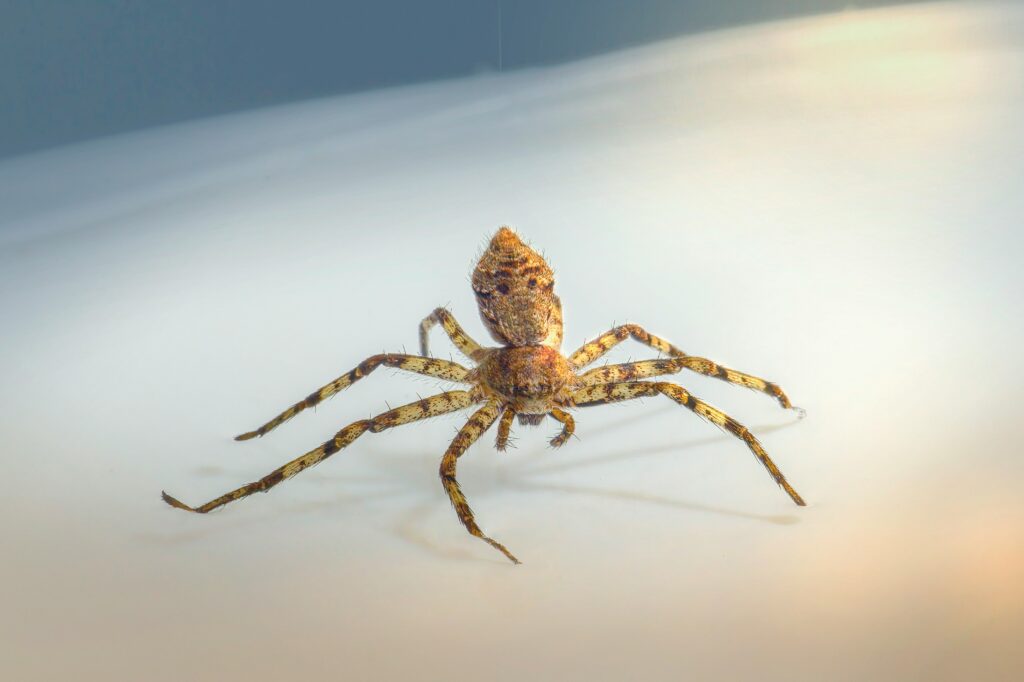
What makes the Regal jumping spider’s leaps even more impressive is their remarkable precision. These spiders don’t just jump high—they jump with pinpoint accuracy, capable of calculating trajectory, distance, and landing position before takeoff. Using their exceptional vision (discussed more below), they can target prey, escape threats, or navigate complex terrain with astonishing success rates. Scientists have observed that before jumping, these spiders perform a brief “planning” pause where they secure a dragline silk thread as a safety line and position their legs precisely for the intended trajectory. This calculated approach allows them to execute complex hunting strategies, including ambush jumps from unexpected angles and rapid sequential jumps to confuse prey or predators.
Vision That Powers the Leap

The exceptional jumping ability of Phidippus regius would be impossible without its equally remarkable visual system. These spiders possess arguably the best vision among all arachnids, with eight eyes arranged in a pattern that gives them nearly 360-degree awareness. The large central anterior eyes (called principal eyes) provide detailed, color vision with resolution nearly comparable to that of humans, while the secondary eyes detect motion and provide peripheral vision. This visual acuity allows them to spot prey from over 20 centimeters away—an impressive distance for a spider only about 2 centimeters in size. The sophisticated neural processing behind these eyes enables the spider to accurately judge distances, calculate trajectories, and time jumps with extraordinary precision, essentially functioning as living rangefinders for their aerial acrobatics.
Hunting Strategy: The Aerial Ambush
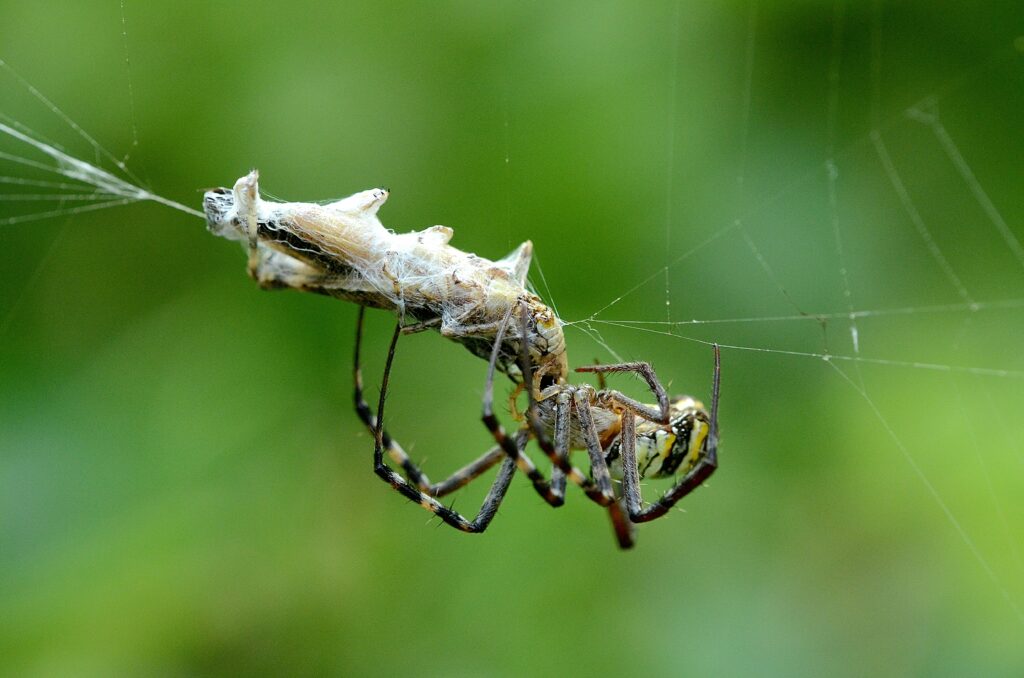
The Regal jumping spider’s exceptional leaping ability forms the cornerstone of its hunting strategy, enabling a unique predatory approach unlike web-building spiders. Rather than relying on snares, these active hunters patrol their territory with a combination of stealth and explosive action. When prey is spotted, the spider carefully maneuvers into an optimal position, sometimes even circling to approach from an unexpected direction. The attack itself is a marvel of precision—the spider launches itself through the air with legs extended forward to grasp the prey upon landing. Remarkably, they can adjust their trajectory mid-flight by manipulating their legs, allowing for last-second corrections if prey moves unexpectedly. This hunting strategy proves extremely effective, with research indicating success rates as high as 90% for some jumping spiders—far higher than many mammalian predators.
The Safety Line: Jumping with a Backup Plan
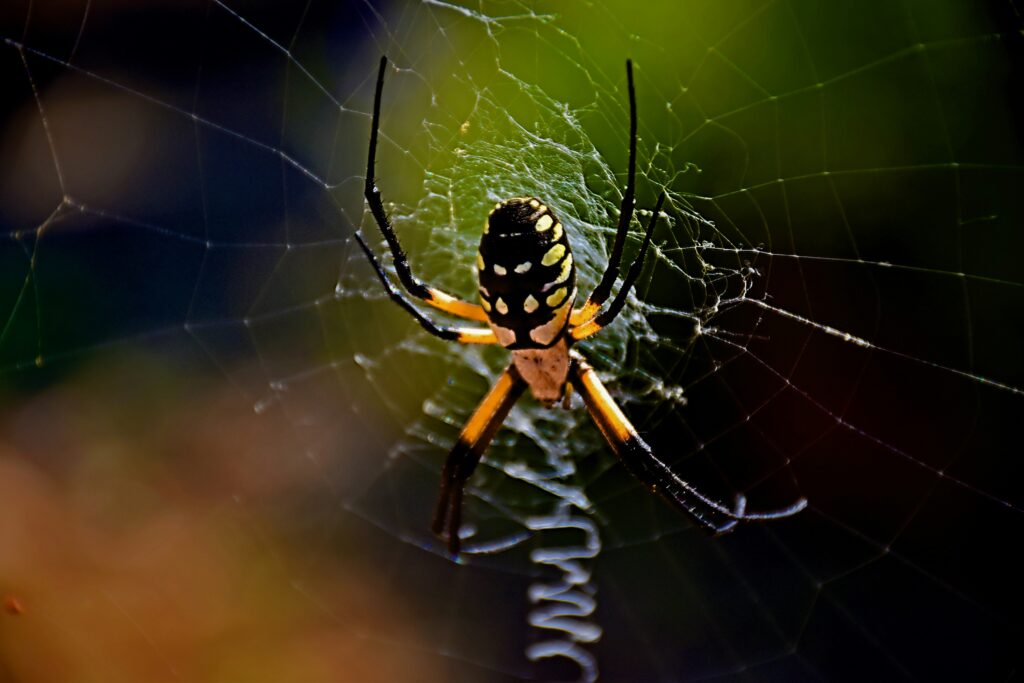
Despite their incredible jumping precision, Regal jumping spiders never take unnecessary risks when leaping. Before every jump, they attach a dragline of silk to the surface they’re launching from, creating a crucial safety mechanism. This silk thread serves multiple functions during their aerial maneuvers. First, it acts as a safety line in case the spider misses its target or needs to retreat quickly. Second, it helps control the descent if the spider intentionally drops from a height. Third, researchers have observed that this silk line may help stabilize the spider during particularly challenging jumps, acting somewhat like a gymnast’s balance aid. The production of this safety line is so ingrained in their behavior that even in laboratory settings where falls pose minimal risk, the spiders refuse to jump without first securing their silk tether.
Size-to-Jump Ratio: Breaking Physical Limitations
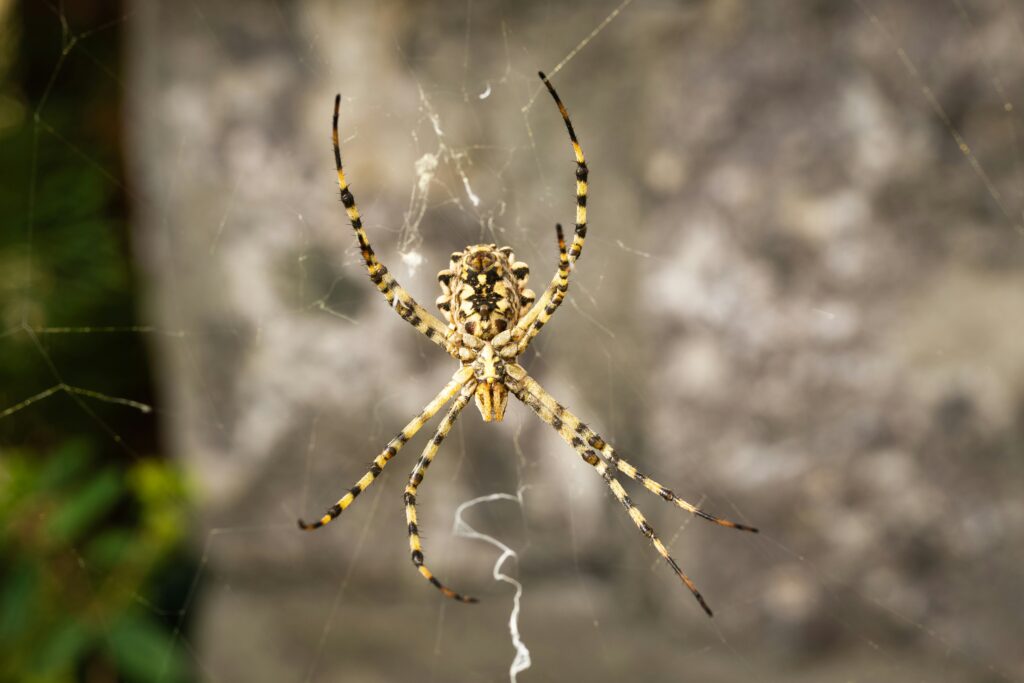
What makes the Regal jumping spider’s leaping ability particularly remarkable is the physical limitations it overcomes due to its size. In the animal kingdom, jumping ability typically scales with body size—larger animals generally jump higher in absolute terms. However, when measured relative to body size, smaller animals usually excel, with fleas often cited as the proportional jumping champions. The Regal jumping spider breaks this pattern by achieving jumps of up to 50 times its body length, far exceeding what would be expected for an arachnid of its size. This exceptional performance results from evolutionary specialization of both its musculature and its hydraulic system. The spider’s body structure has been optimized through millions of years of evolution to maximize power output from a minimal frame, resulting in one of the most efficient biological propulsion systems known to science.
Intelligence Behind the Jump
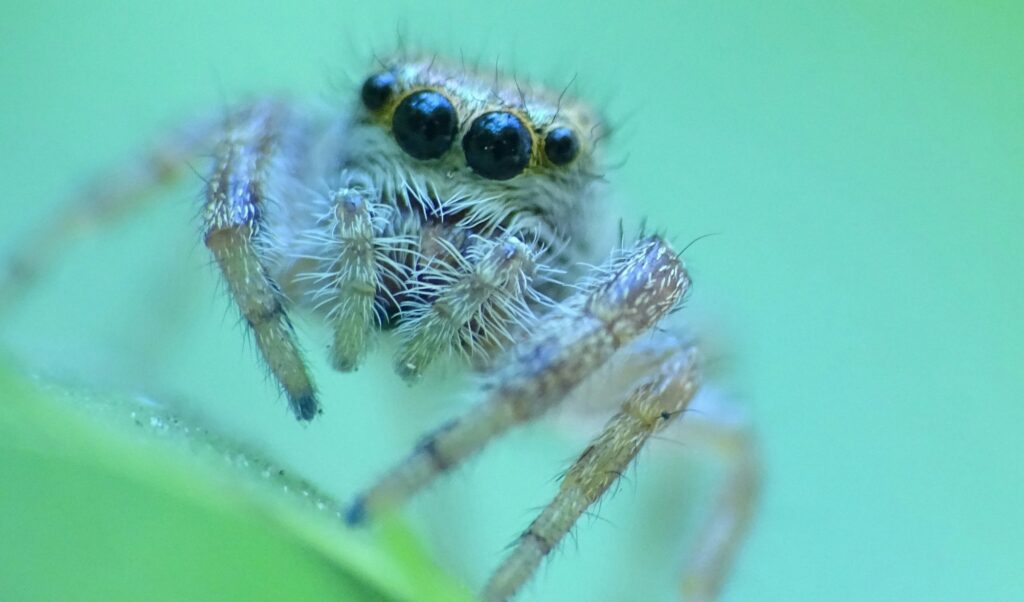
The Regal jumping spider’s impressive leaps aren’t merely reflexive actions but represent sophisticated decision-making. Despite having a brain smaller than a poppy seed, these spiders display remarkable cognitive abilities that support their jumping prowess. Studies have shown that they can formulate multi-step hunting strategies, remember spatial layouts, and even plan detours to reach targets not directly accessible. When preparing to jump, they assess multiple factors simultaneously: distance to target, their own energy reserves, potential threats, alternative routes, and escape options. This complex calculation happens in milliseconds, resulting in what researchers call “situational jumping”—adapting their leap characteristics to the specific challenge at hand. Their ability to learn from previous jumping experiences also suggests a sophisticated form of memory that helps refine their techniques over time.
Habitat and Jumping Adaptations
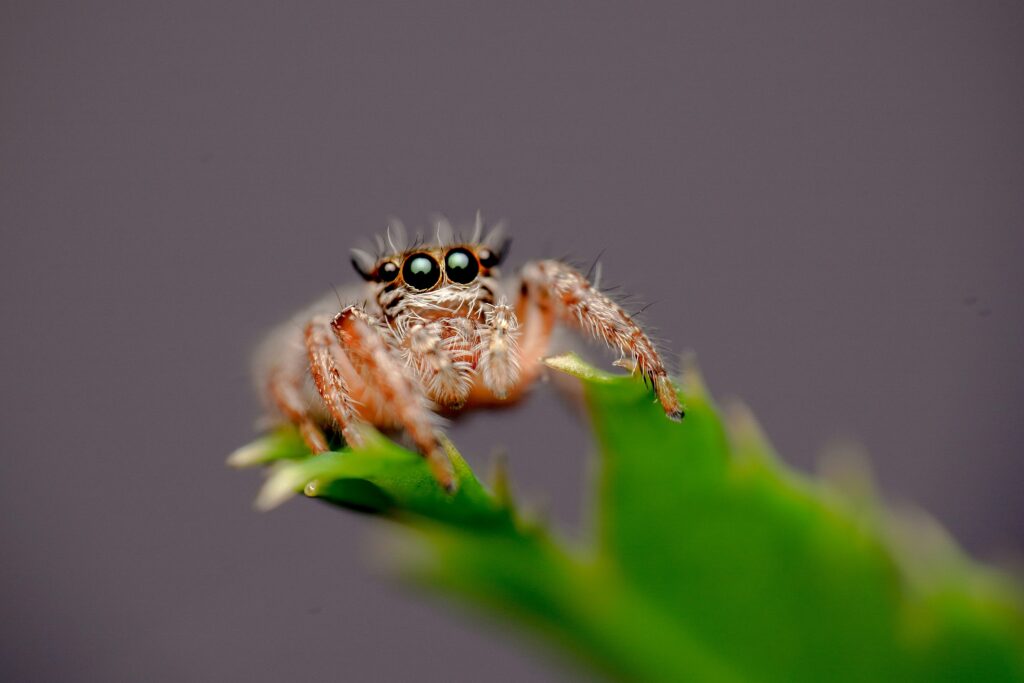
The natural habitat of Phidippus regius has played a crucial role in shaping its extraordinary jumping abilities. Native to the southeastern United States, particularly Florida, these spiders typically inhabit diverse environments including woodland edges, grasslands, gardens, and even human structures. These varied habitats, characterized by complex three-dimensional spaces with vegetation of different heights, have selected for spiders that can navigate efficiently through vertical and horizontal spaces. Their jumping adaptations allow them to traverse gaps between leaves, branches, and other surfaces that would otherwise require lengthy detours. Interestingly, researchers have observed regional variations in jumping patterns, with spiders from more open habitats displaying longer horizontal jumps, while those from densely vegetated areas excel at vertical leaping—suggesting environmental fine-tuning of their remarkable athletic abilities.
The Non-Venomous Nature of the Champion Jumper
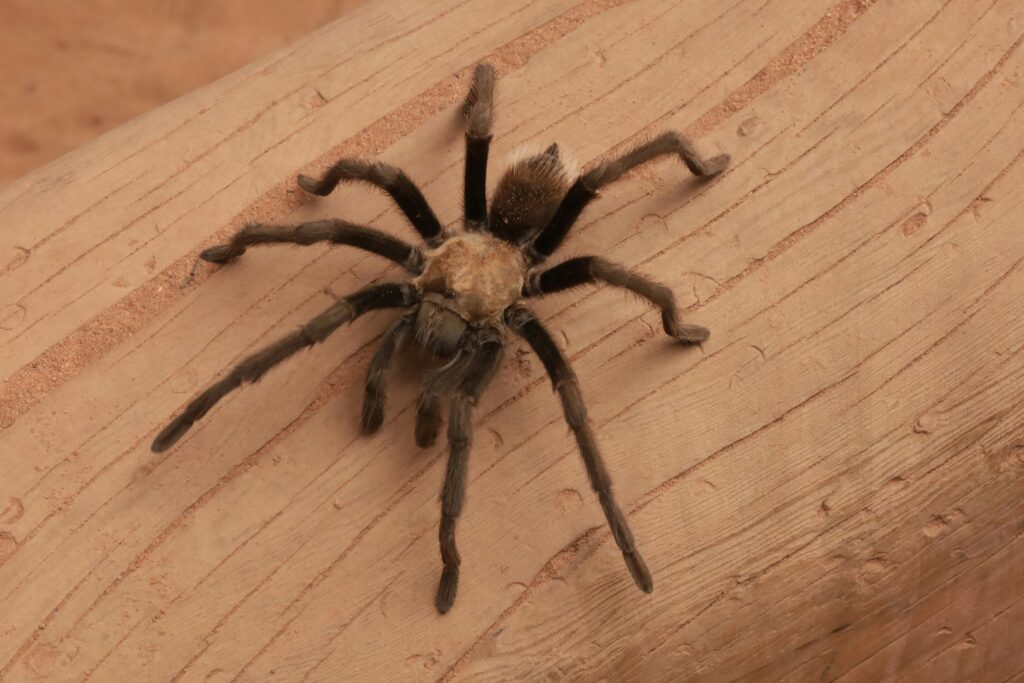
While all spiders produce venom, the Regal jumping spider’s venom is remarkably mild and poses no significant threat to humans. Their bites, which are extremely rare due to their non-aggressive nature, typically cause no more discomfort than a mild bee sting and resolve quickly without treatment. This non-threatening venom profile is consistent with their hunting strategy—unlike ambush predators that rely on powerful venom to quickly subdue larger prey, jumping spiders use their speed and precision to capture smaller insects that don’t require potent toxins to overcome. Their primary hunting tools are their exceptional vision, lightning-fast reflexes, and powerful jumps rather than chemical weapons. This combination of impressive physical abilities with minimal venomous threat has made them increasingly popular as educational ambassadors and even as unconventional pets among arachnid enthusiasts.
Comparing Jumping Abilities Across Spider Species

When comparing jumping abilities across spider species, the Regal jumping spider consistently ranks at or near the top for non-venomous species. Other notable jumpers include the Portia genus, known for their intelligence and hunting prowess, and the colorful Habronattus species with their elaborate courtship dances. However, what sets Phidippus regius apart is the combination of height, distance, and precision in their jumps. While some smaller jumping spiders can achieve proportionally impressive heights, the Regal’s larger size means its absolute jumping distance is generally greater. When scientists measure jumping performance using metrics that combine velocity, accuracy, and energy efficiency, P. regius consistently outperforms other species. This exceptional ability likely evolved as a response to specific ecological pressures, including the need to navigate complex three-dimensional environments and capture particularly evasive prey species.
Conservation Status and Human Interaction
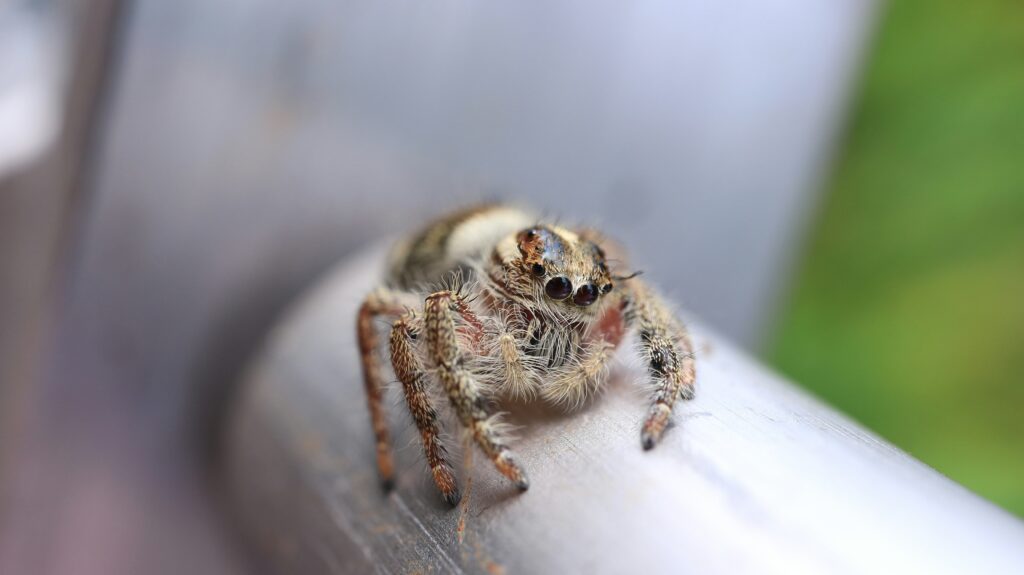
Unlike many invertebrate species facing population declines, the Regal jumping spider maintains stable populations throughout its range and adapts well to human-modified environments. Their ability to thrive in gardens, parks, and even inside homes has helped them maintain healthy populations despite habitat changes. Many arachnologists consider them beneficial species due to their role in controlling pest insects, as they readily hunt mosquitoes, flies, and agricultural pests. The increasing interest in these spiders among nature enthusiasts has led to greater public education about their ecological importance and fascinating behaviors. Citizen science projects tracking jumping spider populations have helped researchers document their distribution and behaviors while fostering greater appreciation for these non-venomous aerial acrobats. Conservation efforts focused on maintaining diverse garden habitats with minimal pesticide use help ensure these remarkable jumpers continue to thrive.
Keeping the Champion Jumper as a Pet

The Regal jumping spider’s combination of impressive jumping abilities, relatively large size for easy observation, and non-dangerous venom has made it increasingly popular in the pet trade. These spiders are considered among the most beginner-friendly arachnid pets, requiring minimal space and care while providing fascinating behavioral displays. A proper enclosure need only be about three times the spider’s leg span in each dimension, though larger habitats allow for more natural behaviors and better observation of their jumping prowess. Keepers report that these intelligent spiders quickly become accustomed to routine and may even recognize their caretakers, sometimes approaching the front of their enclosure during feeding times. Their relatively short lifespan (females typically live 1.5-2 years, males somewhat less) remains the primary drawback for potential keepers, though this is balanced by the opportunity to observe their complete life cycle from spiderling to adult.
Conclusion
The Regal jumping spider stands as nature’s non-venomous high-jump champion, demonstrating how evolutionary pressures can create extraordinary specialized abilities even in small packages. Its remarkable jumping prowess—combining hydraulic power, precision control, and sophisticated visual processing—showcases the ingenuity of natural selection. As scientists continue studying these aerial acrobats, we gain not only greater appreciation for arachnid diversity but also potential inspiration for robotics, biomechanics, and other fields that might benefit from understanding their unique propulsion system. Whether observed in the wild, under laboratory conditions, or as fascinating pets, these spiders remind us that impressive athletic feats aren’t limited to larger animals. The next time you spot a jumping spider, take a moment to observe—you might just witness one of nature’s most impressive proportional leaps.

